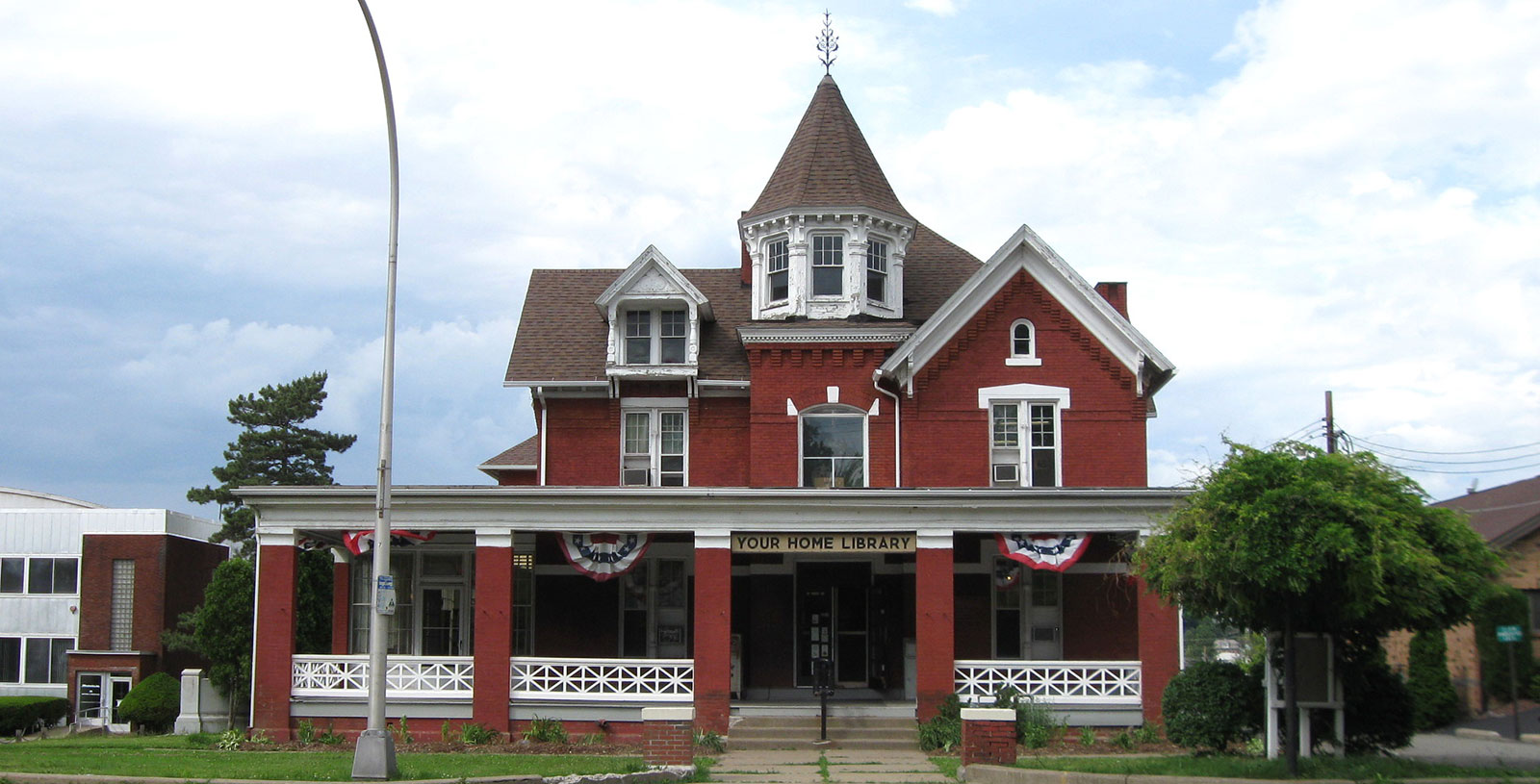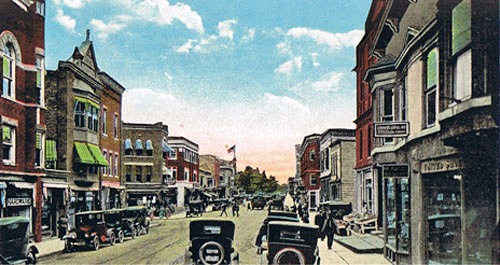Our History
The History of Johnson City, NY

Incorporated on September 15, 1892, Lestershire’s population increased from 3,000 to 10,000 in the first 10 years. Other business following the Lester brothers to the Village included a brush factory, Roberson’s Lumber Company and the 1900 Washer Company. The Lester brothers chose to focus their energies on the development of the homesites, causing the shoe company to suffer. Consequently, the company was taken over by Mr. Henry B. Endicott, a leather supplier and major company stockholder. Mr. Endicott renamed the company the Lestershire Manufacturing Company and appointed George F. Johnson the General Superintendent.
In 1899, using $150,000 borrowed from Mr. Endicott, George F. Johnson purchased half of the company and the Endicott-Johnson Corporation was formed. The company and its owners founded a library, built parks and housing for its workers and helped electrify Main Street. The company also provided medical care for its workers and their families. George F.’s brothers Harry L. and C. Fred played important roles in the development of the Village. Harry L. Johnson was instrumental in forming fair labor polices at the factory. C. Fred Johnson, a pioneer in organized fire prevention practices, fathered the Village’s paid professional Fire Department. Charles F. Johnson, Jr. developed recreation centers and established a pension for Endicott-Johnson employees. At the height of its growth, Endicott-Johnson employed 20,000 people in the area. Unfortunately, the last Endicott-Johnson manufacturing facility, built in 1945, closed in 1993. The Village still has many landmarks related to the Endicott-Johnson Company.
It was this practice of paternalism that formed the basis for Johnson’s “industrial democracy.” This legacy of fair treatment of workers and community outreach and investment made the area vibrant. It was George F. Johnson’s “Square Deal” hiring practices that made Johnson City the “Home of the Square Deal.”
On March 21, 1916, the Village of Lestershire was renamed Village of Johnson City to honor George F. Johnson and his family.
Annexations have played an important part in Johnson City’s history. The first came in 1918, the second in 1922, the third in 1936 and the fourth and largest, the Oakdale Annexation, in 1962 which increased the size of the Village by almost a third. The Oakdale area was the sight of Bigler’s Mill, which provided the 60-foot beam of white oak that became the keel of the ironclad “Monitor” of Civil War fame.





The construction of Route 17 was an important part in the development of the Village in the 1970’s and 1980’s. Comprising some 900,000 square feet of floor space, the Oakdale Mall, the first regional shopping center in Broome County, was constructed off one of the Village’s interchanges. The success of the Oakdale Mall lead to other developments in that area of the Village including the Giant Oakdale Plaza, the Johnson City Plaza, Toys R Us, Wegmans Supermarket and the construction of four hotels. Although the importance of Endicott-Johnson to the region has declined, this decline has led to an increased diversity of industrial activities. Several small electronics firms are located in the industrial heart of Johnson City and other retailing activities are scattered throughout the Village and its historic downtown. These shops serve primarily as neighborhood shopping centers, satisfying local needs. The Village’s central location and proximity to a good transportation network make it invaluable as a distribution and storage location.
The growth in the Oakdale area included the construction of a new high school in 1970, four apartment complexes and countless residential homes. In the 1980’s, the hospital expanded again, adding the Decker Building and the Wilson Square Office Building. The hospital was renamed the “Wilson Memorial Regional Medical Center” to reflect its position as a major regional hospital. As technology & medical care continue to advance, the hospital is constantly expanding and upgrading its facilities.
In the 1990’s, the Village experienced another surge of growth with the development of the Carpathian Hill project, which included the construction of office buildings, the home of WBNG-TV, the Highlands Senior Housing and numerous residential lots.
The Village is proud to be the future home of the Binghamton University School of Pharmacy and Pharmaceutical Sciences which is scheduled to open in 2018 and the Decker School of Nursing.
Home of the Square Deal
Pay your water, sewer and refuse payment online.